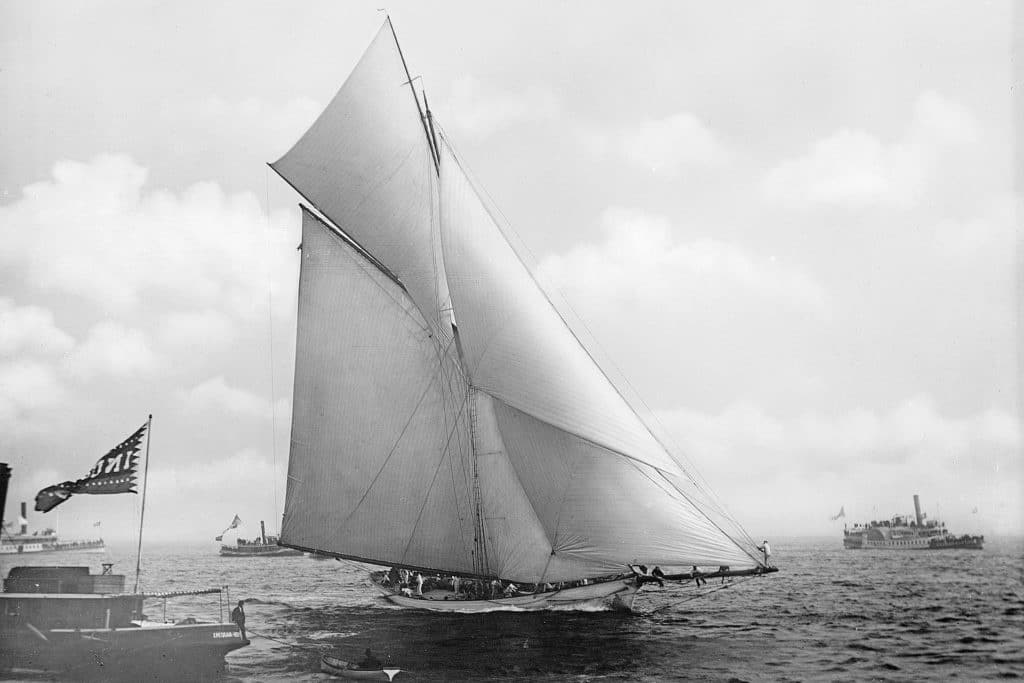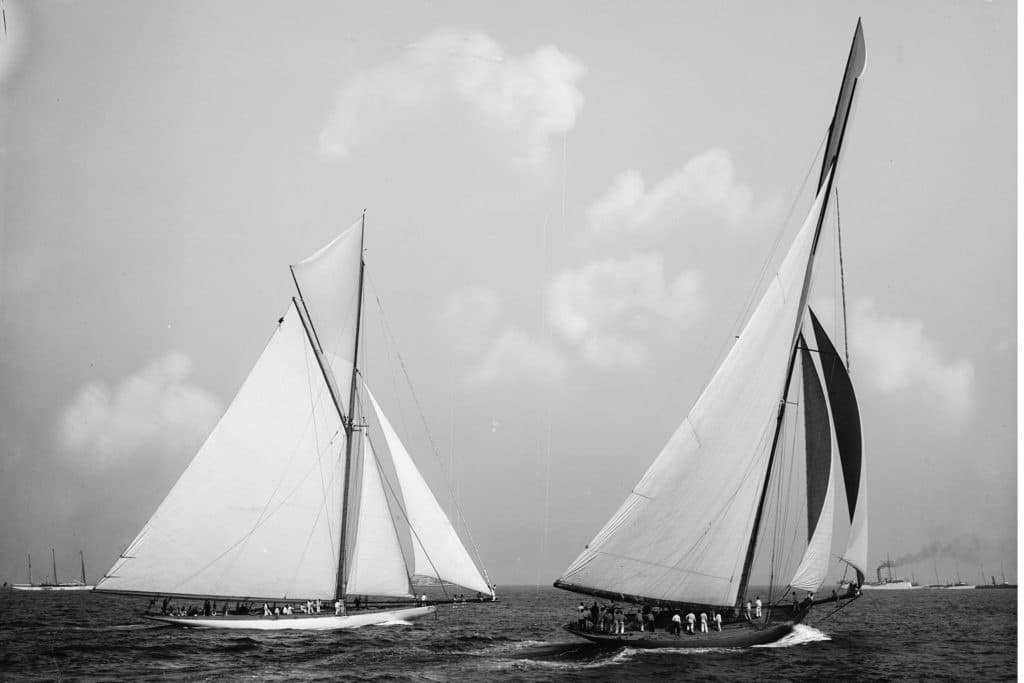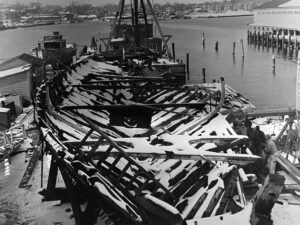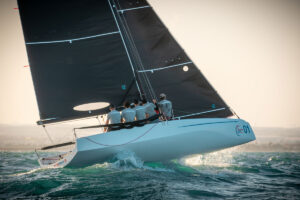The New York Yacht Club Rule: 1885-1887

After a series of challenges in the 1870s, the first design rule to be implemented for the America’s Cup came in 1885. In 1881, the Deed of Gift was amended to help standardize racing, and discourage just anyone from attempting to win the Cup. The new rules stated that challenges must only come from yacht clubs on the sea, and that all challengers must sail to the venue on their own hull. From this change stemmed the NYYC Rule. Sail area and waterline length were taking into consideration for handicapping, with penalties awarded to teams whose waterlines exceeded 85 feet.
Under the NYYC Rule, the United States would fend off challenges from Irish designer John Beavor-Webb, who sent two yachts, one in 1884, Genesta, and one in 1885, Galatea. The US Edward Burgess designed sloops Puritan and Mayflower bested the challengers and defended the Cup. The final challenge under the NYYC Rule came in 1887when Burgess again designed a winning sloop, Volunteer to fend off George Lennox Watson’s Thistle.
vs.
The Seawanhaka Rule: 1889 – 1903

In 1887, a new rule was put into place, based on the Seawanhaka Corinthian Yacht Club’s rating system. Renowned naval architect Nathanael Herreshoff took advantage of the new rating system to shape some of the largest and most extreme contenders to ever sail the America’s Cup.
By this time, the Cup craze was in full swing, with four British cutters built and four American contenders crafted in a heated battle between naval designers. In 1893, Herreshoff himself helmed Vigilant, of his own design, to victory of the British challenger Valkyrie II.
The Seawanhaka Rule would also see the first three of a series of challenges from Sir Thomas Lipton, who backed numerous challenge attempts with his well-known yachts all by the name of Shamrock.
Notable Yachts: Columbia, Shamrock, Reliance, Defender









